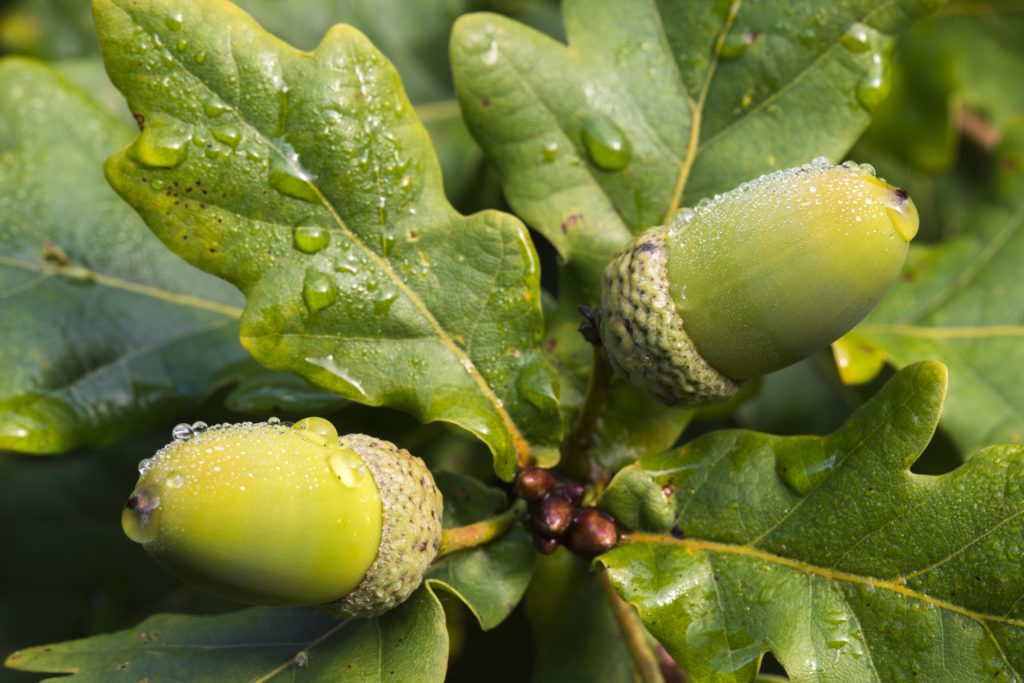“A seed is so small, where do you suppose/It stores up all of the things it knows?” This line from Aileen Fisher’s The Seed reminds me how seeds and great poems are alike. Both represent something big packed very small, with the potential to grow, replicate and live forever.
As with most flowering plants, the seeds produced by oak trees are the result of double fertilisation. On reaching the ovary of a flower, one nucleus from a pollen grain fertilises the egg cell to form an embryo, and a second nucleus initiates the formation of a parcel of seed food – the endosperm – which sustains the seedling during its first burst of growth. If s the endosperm that makes seeds super-nutritious. In an acorn, germination begins when the seed has soaked up enough water to swell the kernel and split its tough coat. The water also activates metabolic processes that convert the endosperm into easily utilised energy. The first sprout to emerge from the kernel is the primary root, or radicle.

Its tip contains dense granules called statoliths. These serve as gravity indicators, guiding the root straight down. The next sprout is the primary shoot, which grows unerringly upwards. In most native plants, the shoot will emerge above ground and unfurl structures that are called cotyledons or seed-leaves, which begin the process of converting sunlight into food that will sustain the plant for the rest of its life. However, oak cotyledons never see the light of day. They remain underground, where they function as additional energy reserves until the first true leaves open in daylight, like most deciduous trees, oaks are dicots – in other words, their seedlings usually produce two seed-leaves. The other great grouping of flowering plants, the monocots, produces a single seed-leaf. This group contains orchids, lilies, palms and grasses including cereal crops such as wheat, rice and maize.















